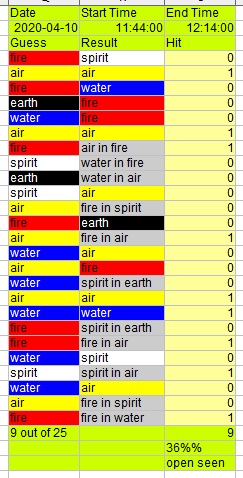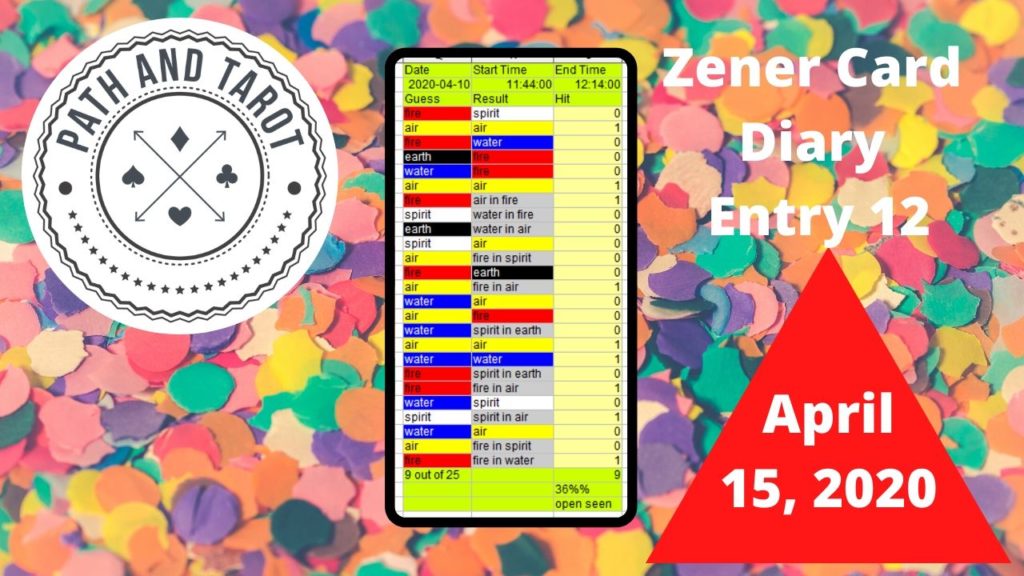Zener Card Diary April 15, 2020.
Currently, I am learning how to perform a z-test to understand if the data I am collecting is significant. I can’t seem to understand it, at least not yet.
This entry will talk more about my learning path with statistics and the z-test.
Z-Test
I understand a few things already, but I still can’t seem to get the equation down. What I know is the z-test is used to test a hypothesis. With enough data, you can enter it into an equation and see if the data you collected is significant.
I have data right now, but maybe I don’t have the right data. Not knowing how to do this z-test could be a good thing. This will allow me to collect more data while I learn statistics.
Elemental Deck
I recently started using my elemental deck to do seen open deck testing. This where I guess the card, reveal it and shuffle it back into the deck. The process takes longer, but it yields stronger results. I can’t predict my answers through unconscious logic and create a sensory leak
My previous method of testing with unseen cards and closed deck attempted to combat that by placing cards face down for guesses. Now it seems like that the method may not be as strong as the seen open deck method.
I could do both. I can arrange my tarot deck to do the unseen closed deck method first. Then I could perform the seen open deck method and compare the two.
Seen Open and Unseen Closed
By testing yourself you are testing for clairvoyance. If you are testing someone else you are likley testing for telepathy.
Based on the Zener card article from Psychicscience dot org the open and closed decks are the foundational methods of testing with Zener cards. The open or closed decks with seen or unseen cards provide a variation on how you can test. So, it’s ok that I am still learning. I will have more time to collect better data.

Major Minor Change
The major change I am introducing into this test is the presence of new cards. These are the sub-elemental cards that have two elements printed on them. If I guess either of the elements it counts as a hit. There are 25 sub-elemental with 50 core elemental cards in the 75 card deck.
The logic of the deck structure I feel is sound. The 25 sub-elements are made up of two elements, and 50 core elements could make up the 25 sub-elements.
I have not decided if I want the sub-elements considered special in other ways. What I mean is that when I guess them would they mean something different? I am not sure yet, so I will stick with guessing one element and use that.
I wonder how the results will be changed as a result of having different cards?
First Unseen Open Deck Test
On April 10th I did my first seen open deck test with the newly added sub elemental cards. If I guessed fire and a sub elemental card came up with fire on it, that counted. I scored 9 hits out of 25 cards to get a 36% hit percentage. Not bad for the first attempt live on Instagram. It still isn’t significant, but it gives me a starting point to work with.
There is plenty more I am studying, and you could too. If you are interested in learning more you can visit my resources page. Currently, Harvard has released free courses for probability due to the pandemic restrictions. You should have a look if you are curious. Well… stay tuned for more. Always learning.
Read the next entry here:
Zener Card Diary Entry 13

